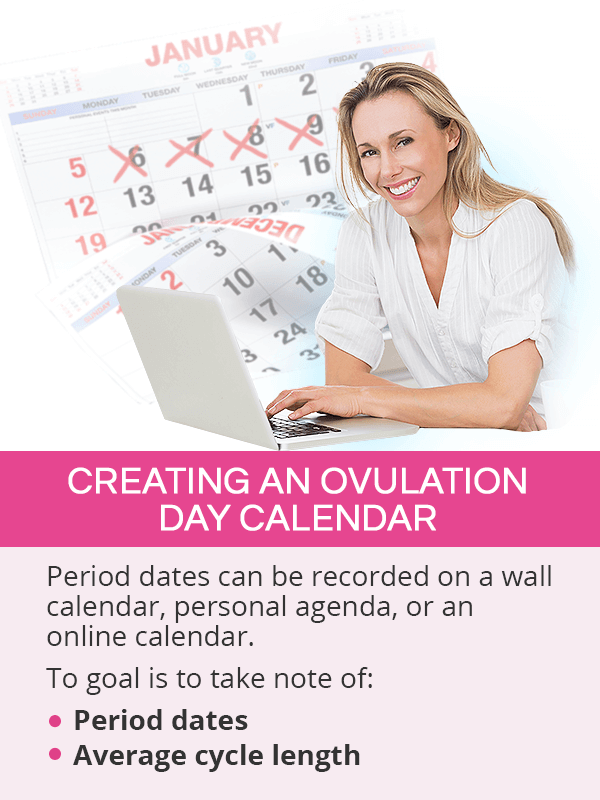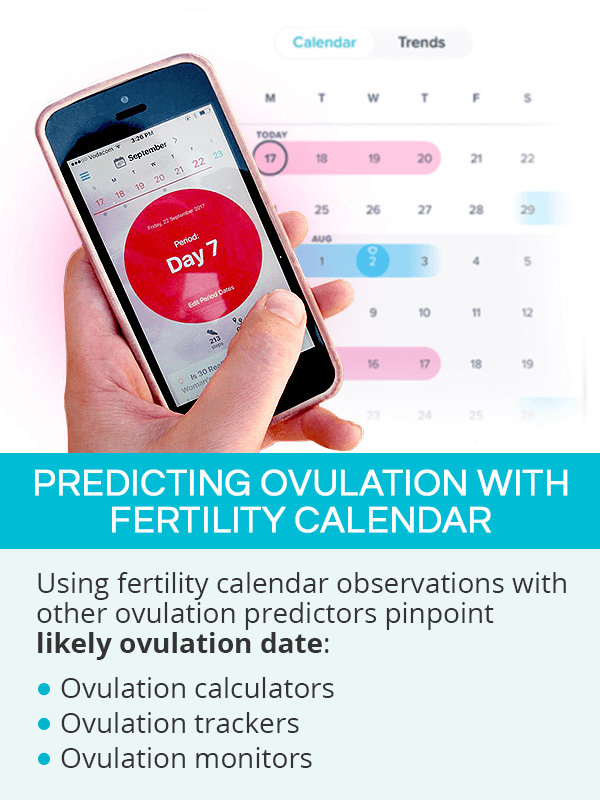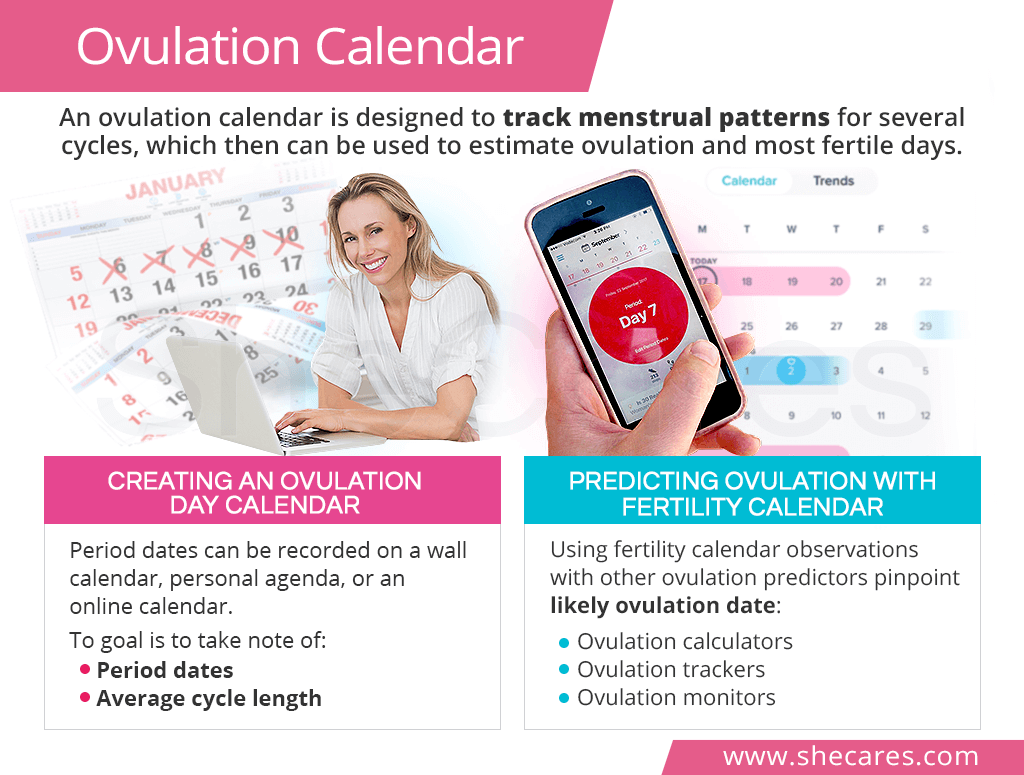What is an Ovulation Calendar?
An ovulation calendar, often referred to as a fertility calendar, is simply a table where a woman can register the dates of her periods.
Maintaining an ovulation calendar for 3 months allows for the best results as it can show reliable menstrual patterns and bring to light any abnormalities. These observations can also help estimate ovulation and the fertile window that precedes it.
Creating an Ovulation Calendar

Creating an ovulation cycle calendar is very simple. It can be noted on a wall calendar, in a personal agenda, or on a printable 3-month ovulation calendar. Observations can also be made on electronic calendars, such as mobile calendars or those available through one' email account.
Whatever medium used, the goal is to keep track of the following information month to month:
- Period dates: the first day of a period and for how long it lasts
- Cycle length: it is counted from the first day of a period until the first day of the next month's period
Predicting Ovulation with a Fertility Calendar

Observations recorded with an ovulation calendar are the basis for calculating a woman's fertile days, which can be done with a variety of tools:
Counting method, which involves estimating the ovulation day by counting 14 days backwards from the day of the expected period. Subtracting five more days from the ovulation day covers the entire fertile window in a given cycle.
Ovulation calculators are online tools, which enable the user to input the date of the last period and an average length of the cycles in order to estimate upcoming fertile days and ovulation as well as the next period. These ovulation predictors do not store or track data month to month.
Ovulation trackers are mobile or computer-based applications, which not only work as an ovulation calendar and calculator, but also give an option to register ovulation signs and symptoms, like fertile cervical mucus, basal body temperature, or breast tenderness. The application then analyzes the input and produces predictions for the most probable date of upcoming ovulation.
The best ovulation calendar can also be maintained in the form of a printable fertility chart, a diligent maintenance of which can produce viable ovulatory patterns. Like internet-based ovulation trackers, the chart combines recordings of recent periods with the results of ovulation tests, like measuring basal body temperature and checking cervical position.
It is important to mention that these ovulation predictors give rough approximations on when ovulation is likely to occur. The most accurate predictions are made through self-assessment of ovulation signs and symptoms.
Key Takeaways
Starting a fertility calendar to get pregnant is an excellent way for women to familiarize themselves with their menstrual rhythms. Recording one's period dates for at least three months can be done on a wall calendar, personal agenda, or a printable ovulation calendar. A good understanding of the length of a woman's cycle can help her estimate ovulation more accurately with various effective predictors and time it with intercourse to successfully conceive.
Sources
- American Pregnancy Association. (2018). Ovulation Calendar. Retrieved September 18, 2018 from http://americanpregnancy.org/ovulation-calendar/
- March of Dimes. (n.d.). Ovulation calendar. Retrieved September 18, 2018 from https://www.marchofdimes.org/pregnancy/ovulation-calendar.aspx
- Medline Plus. (2018). Pregnancy – Identifying fertile days. Retrieved September 18, 2018 from https://medlineplus.gov/ency/article/007015.htm
- Your Fertility. (2018). Getting the timing right. Retrieved September 18, 2018 from https://www.yourfertility.org.au/everyone/timing


